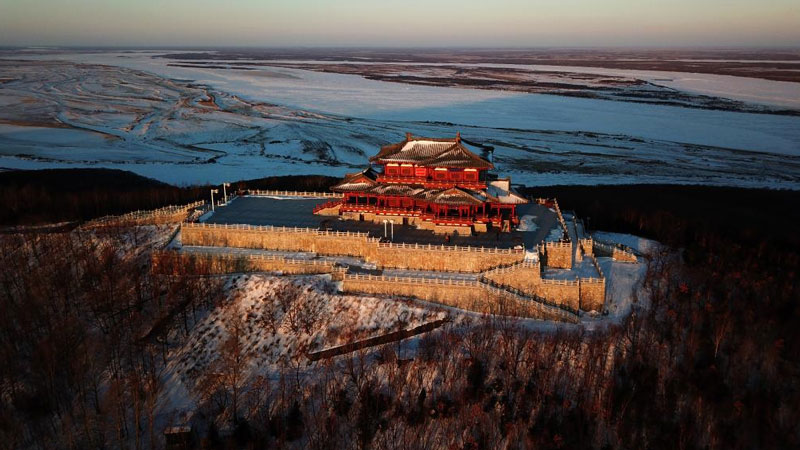What China has done right to maintain mild CPI growth
BEIJING, Jan. 16 (Xinhua) -- China has avoided the inflation shock that afflicted most Western economies last year, despite multiple challenges such as mounting imported inflationary pressures and the resurgence of domestic COVID-19 cases.
China's consumer price index (CPI), a main gauge of inflation, rose 2 percent in 2022 compared with 2021 -- well below an official target of around 3 percent -- while China's producer price index rose 4.1 percent in 2022, according to data from the National Bureau of Statistics.
China's increases are just a fraction of those reported in the United States, the eurozone and Britain, and also substantially lower than those seen in other emerging economies such as India, Brazil and South Africa.
"Stable domestic consumer prices are in stark contrast to the global spike," said Wan Jinsong, an official with the National Development and Reform Commission (NDRC).
Mild inflation confirms China's role as a stabilizer for world prices, and clears the way for the government to adopt stimulus measures to rev up the economy.
STABILIZE FOOD PRICES
A steady food market is crucial for ensuring overall price stability, as food prices account for nearly one-third of China's CPI last year.
Food prices rose 2.8 percent year on year in China last year, significantly lower than the 10-percent increase seen in major economies such as the U.S. and Europe.
This could not have been achieved in China without the government's marco-regulation measures -- a case in point is the price of pork, the staple meat in China.
When hog prices were depressed in the first half of 2022, the central government bought pork for its central reserves 13 times in succession and asked local governments to increase purchases in a bid to support hog prices and boost pig farmers' confidence. When pork supplies were tight during the second half of the year, authorities released seven batches of frozen pork from central reserves amid soaring prices, and urged local governments to increase supplies, said Wan.
"China's pig production capacity is generally within a reasonable range, and we will likely see smaller price fluctuations this year," he added.
The grain price is another telling example. Monthly international wheat and corn prices once soared as much as 74 percent and 36 percent, respectively, year on year, while the retail price of rice fell 1 percent in 36 major Chinese cities in 2022, and that of flour went up just 3 percent, said Niu Yubin, an official with the NDRC.
ENSURE ENERGY SUPPLIES
China has been largely protected from the impact of the global energy crisis, due to its measures to ensure adequate supplies.
The country cut import tariffs for coal to zero from May 1, 2022 to March 31, 2023. China also increased high-quality coal production capacity in an orderly manner, accelerated the construction of large wind power and photovoltaic bases, and increased oil and gas exploration and development.
To stabilize market expectations, authorities effectively responded to abnormal energy price changes, reined in on malicious speculation, and also cracked down on the fabrication and spreading of fake information about price increases.
China established a coal price monitoring and cost investigation system, and launched evaluations and compliance reviews concerning coal price index providers.
In the first 11 months of 2022, energy prices in the U.S. and the eurozone jumped about 27 percent and 38 percent, respectively, from a year earlier, while fuel prices posted a mild increase of 3 percent in China.
DELIVER SUBSIDIES
The country has established a price subsidy mechanism to offer financial aid to vulnerable communities in case of price hikes.
In 2022, China adjusted this mechanism, expanding the beneficiaries of the policy and lowering its triggering threshold from September 2022 to March 2023.
Around 6.5 billion yuan (about 968 million U.S. dollars) of price subsidies were offered to 200 million people in need last year, data from the NDRC showed.
Since 2020, Chinese authorities have provided a total of around 37.5 billion yuan of price subsidies to 730 million people in distress, in order to help cushion the impact of price increases.
When it comes to this year's price trend, analysts agree that China has the confidence and capabilities to keep overall prices stable -- citing successive bumper harvests, reasonable hog production capacity and sufficient energy supplies.
As the Spring Festival approaches, authorities urged stronger steps to ensure supply and stable prices of necessities, medical goods and energy, so as to meet people's need for food, medical care and winter heating.
Photos
Related Stories
Copyright © 2023 People's Daily Online. All Rights Reserved.









